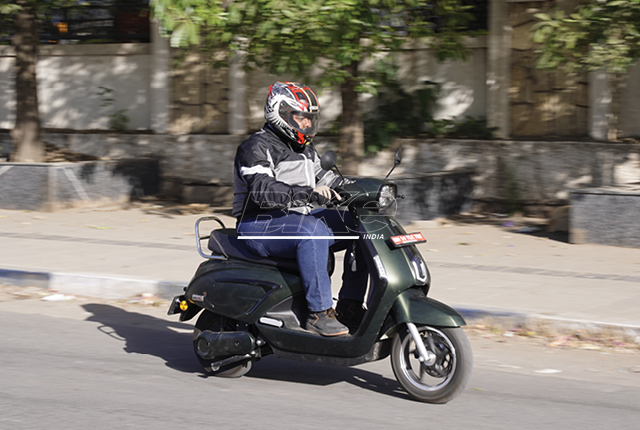
The iVoomi Jeet X first appeared in the market in 2022 and now the manufacturer has gone ahead and given it a comprehensive update while retaining its core feature: a removable battery. We went for a ride on it to check it out.
Story: Sayantan De
Photography: Sanjay Raikar
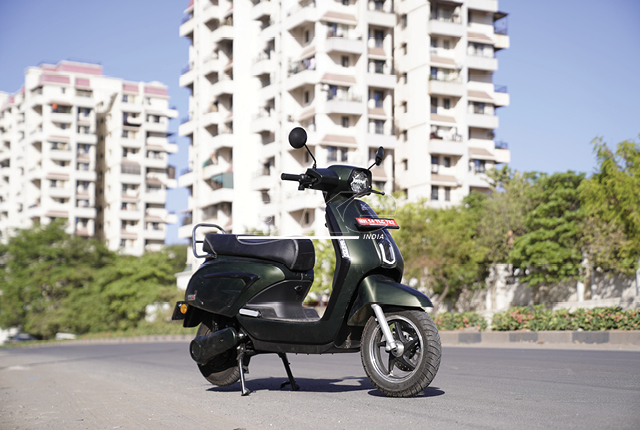
iVoomi Energy is a start-up in the indigenous electric scooter market. It launched its first product in 2022. Being a small new company, it has moved with agility, constantly updating its scooters. Recently we rode the latest iteration of the iVoomi Jeet X electric scooter, the ZE. It brings in some new changes but retains the core identity of the scooter: a removable battery that can be charged externally.
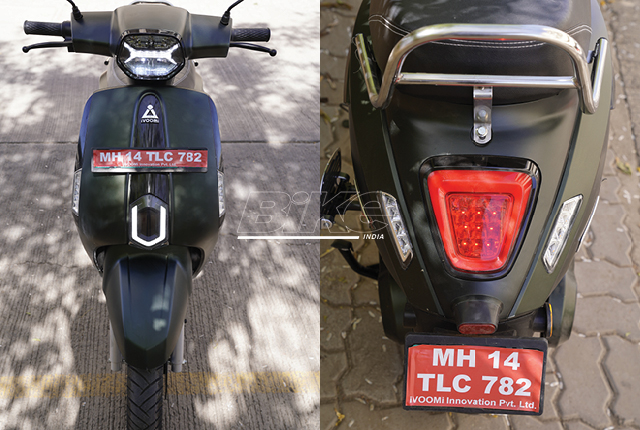
The styling of the iVoomi Jeet X ZE is conventional, traditional even, with the square-ish headlight reminiscent of the Vespa SXL. The earlier versions were plastered with some exceedingly bright stickers over the cowls, but, personally speaking, I prefer the clean look of the ZE. The matte green paint on our test scooter made it look understated yet elegant. It is stylish enough for the young buyers and simple enough for the more mature customers.
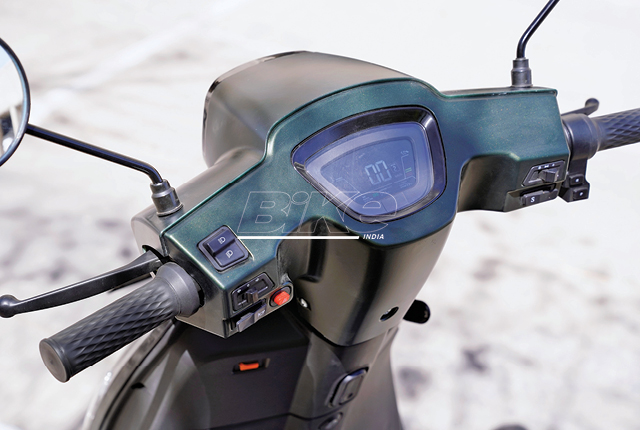
The display is stark in its simplicity: a negative LCD relaying basic information such as the speed, range, battery percentage, and the selected riding mode. There’s Bluetooth connectivity, though, which can display call and SMS alerts as well as turn-by-turn navigation through the companion app. There are three riding modes—Eco, City, and Sport—about which we will talk later on in more detail. There’s a generous under-seat storage, through which you can access the removable battery, and there’s a second storage in the front apron as well, though the hinge on that felt a little flimsy. iVoomi informed us that it would be looking into that before the scooter went into production.
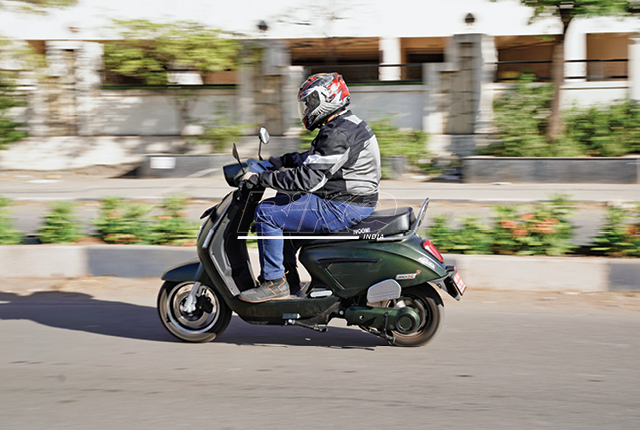
The riding position feels akin to that of the classic scooters, with a low handlebar that feels optimized for short jaunts around town. One of the neat tricks up its sleeve is the spring-loaded pillion foot-pegs, which can be opened by pressing down on them and then releasing the pressure. To close them, all you need to do is to push them back slowly until you hear a click. This, I feel, is a tremendously useful feature which every manufacturer should adopt, be they petrol or electric vehicle makers.
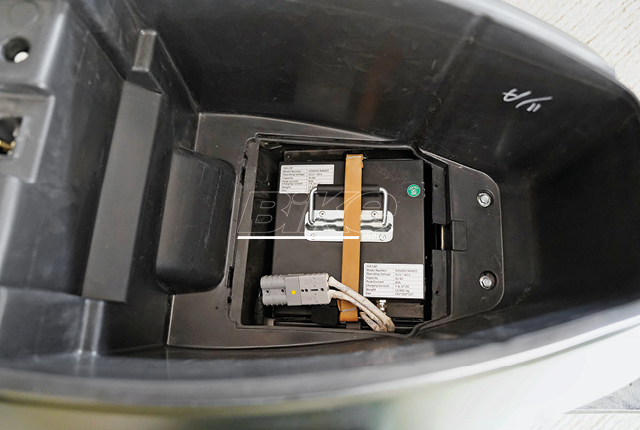
The iVoomi Jeet X comes with a two-kWh battery, but the Jeet X ZE packs a 2.4-kWh one and even the cell type has been changed from 18650 to 21700. This, in turn, increases the range from 100 kilometres of the Jeet X to 140 km in Eco mode. The output of the motor has been lowered as well, with the Jeet X ZE pumping out 2.1 kW (2.8 hp) as compared to the 2.5 kW (3.4 hp) in the case of the Jeet X and this has contributed to its longer range.
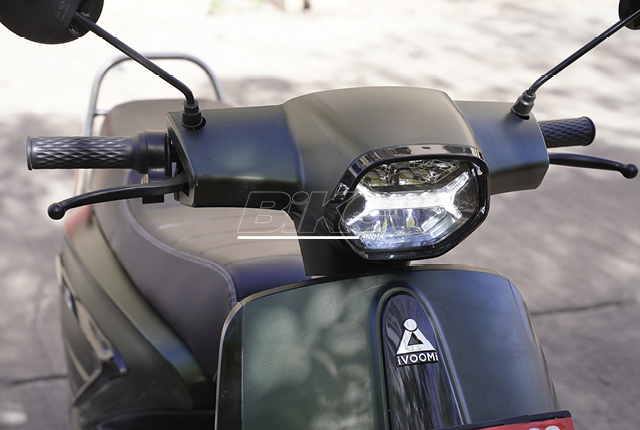
The scooter takes about five-and-a-half hours to reach full charge from a regular wall outlet. But the Jeet X ZE has a removable battery, which means you can have a fully charged battery ready to go when your existing battery is depleted and that makes the turn-around time essentially zero. Thanks to higher taxation on vehicles with removable batteries, we don’t see more of them in the market, but we hope it changes soon as that would make life really convenient for electric vehicle owners.
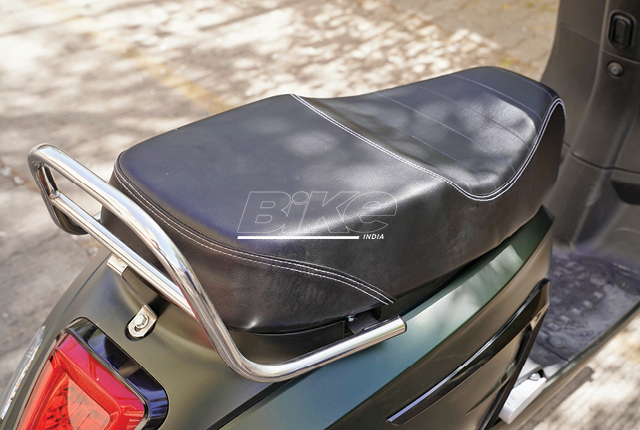
The iVoomi Jeet X ZE, like the Jeet X, comes equipped with 12-inch wheels front and rear, which give it excellent stability in a straight line as well as around corners. While we did not get up to any corner-carving antics on the X ZE, it held its line through turns quite well and mid-corner corrections were easy, partly owing to the exceptionally light 94-kilogram kerb weight of the scooter (the Jeet X weighs even less at 83.5 kg). This makes the Jeet X ZE one of the most lightweight scooters available in the market today, electric or petrol.
Of the three riding modes, Eco is usable in slow-moving traffic; however, it limits the scooter’s speed to such an extent that you should switch to one of the faster modes in anything other than the aforementioned situation. Acceleration is sprightly on account of the low weight and braking is stable and predictable, aided by the same lightweight nature of the vehicle. Ride quality is quite good, too, and the rear shock-absorbers can be adjusted for spring preload, further enhancing the ride quality. Adjustable rear suspension is not so common in this segment, so it was a pleasant surprise to find the Jeet X ZE equipped with it.
The price of the iVoomi Jeet X ZE that we rode, equipped with the 2.5-kWh battery, is Rs 94,999. While the base model with a 2.1-kWh battery is priced at Rs 89,000, the top-end model with a three-kWh battery costs Rs 99,999 (all prices ex-showroom). Despite electric vehicles with removable batteries being taxed at a higher rate, iVoomi have managed to keep the prices competitive and, with an extra battery, it just might be the answer to range anxiety.
Overall, iVoomi Jeet X ZE is a solid, no-nonsense electric scooter that delivers exactly what it promises, which is no mean feat in the cut-throat Indian electric scooter market.


Leave a Reply